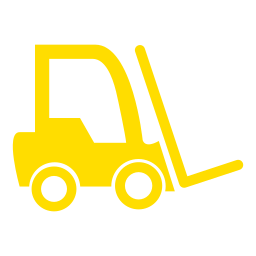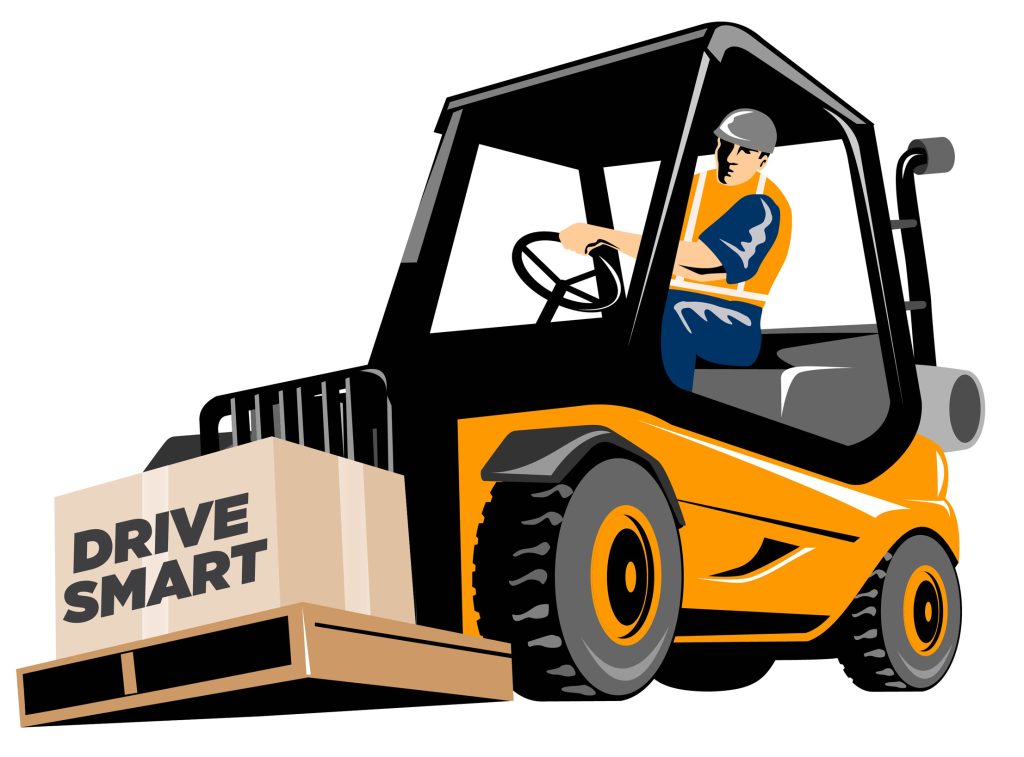Forklifts are a common sight in the supply chain industry, serving as a valuable tool to move products between links efficiently. To operate that Forklift Beginner Course Auckland would guide the operators in a better way. However, their use comes with the risk of injury, much like any other industrial equipment.
OSHA reports that forklifts are responsible for approximately 85 fatal accidents annually, with around 35,000 accidents resulting in severe bodily harm and 62,000 classified as non-serious. To put these figures in perspective, about one in every ten forklifts will be involved in an accident, as stated by the Industrial Truck Association (ITA).
Nevertheless, 25% of these accidents occur due to insufficient or a lack of forklift operator training. This means that a quarter of these accidents are entirely preventable, making it crucial to renew your focus on forklift operator training to avoid contributing to these alarming statistics. Following these nine practical tips for forklift safety procedures can reduce the risk of common forklift-related injuries and accidents, especially if you’re a beginner operator who just completed Forklift Beginner Course in Auckland
Maintain High Visibility at all times:
To avoid accidents, it’s crucial to maintain high visibility at all times when operating a forklift. Keep the forks low to the ground to have a clear view ahead and if the load obstructs visibility, drive the forklift in reverse while looking in the direction of travel. You can also follow these additional tips to maintain high visibility:
- Use spotters to help position the load off the rack if needed.
- Install headlights if working in poorly lit areas, outdoors, or at night.
- Make eye contact with pedestrians when operating a forklift near them.
- Be cautious when approaching blind spots such as aisle intersections and sound the horn to alert others.
- Drive slowly when entering or exiting warehouses or buildings, as the sudden change in lighting can temporarily blind the operator and create hazards for other workers and property.
These practices are crucial for forklift operators, and they are emphasised in the Forklift Beginner Course Auckland ensure the safety of the operator and those around them.

Use Forklifts Quickly and Safely
Operate the forklift within the pre-set speed restrictions to prevent catastrophic injuries from tip-overs and whiplash from stopping too suddenly. The operator may be thrown off the forklift or crushed by the machinery or the weight they are carrying if a tip-over happens due to a stop, turn, direction change, or sudden turn made at a high rate of speed. According to the ITA, forklift tip-overs, which account for 42% of all significant forklift accidents, are the leading cause of fatalities. These things are explained the forklift operator Beginner course to avoid accidents and incidents.
Make sure the load is stable and secure.
Off-Center Loads:
Overloading:
- Be aware of the lift trucks and any employed attachments’ capacities.
- Read the manufacturer’s instructions before picking up a cargo (especially if it’s big or oddly shaped) to ensure you’re within the truck’s maximum weight limit.
- Use OSHA’s Safe Load Capacity Calculation as a reference when the manufacturer’s instructions are unavailable to provide safe loading.
Damaged Loads:
Understand OSHA's guidelines for floor marking.
Employees may find it challenging to work and move about the job safely due to crowded warehouses, loading docks, pedestrian traffic, and heavy equipment traffic. Floor marking can create pedestrian-only pathways, keep workers from hazardous loads, and provide forklift traffic controls to combat this. One can learn these by having Beginner forklift training.
In its standard on material handling and storage (29 CFR 1910.176), OSHA mainly addresses floor marking when it stipulates that “Permanent aisles and passageways shall be appropriately marked.” These implications include:
Although it is advised that lines be 2–6 inches wide, floor marking lines must be at least 2 inches broad to ensure maximum visibility.
Aisles should be at least four feet wide or three feet wider than the most significant piece of equipment used in that aisle.
Flags, traffic cones, and similar markers may be employed if the facility has atypical surfaces (such as dirt floors), provided staff members have received training on the system’s meaning.
Additionally, the colour of the floor markings is crucial. Emergency switches, dangerous devices, and hazards associated with fire are all identified by the colour red. Yellow denotes danger and warns of physical risks like stumbling or falling.
To ensure a safer workflow, ensure that floors are designated adequately across your building and that staff members understand the meanings of the symbols and colours.
Forklift Beginner Course Auckland: Recharge and Refuel in Designated Areas
Not only is it crucial to keep equipment adequately fueled and charged to sustain productivity, but it can also reduce the danger of injury if a lift truck stops unexpectedly due to a lack of power. Be sure to recharge or refuel in the facility’s authorised area, which is typically well-ventilated and away from typical industrial risks. Turn off the lift truck before fuelling and lower the forks downward.
Forklifts with internal combustion engines should undergo routine engine emissions tests to check for any dangerously high amounts of carbon monoxide that could endanger workers, especially if the lift truck is always in use in an enclosed space.
Attend Beginner Forklift Training and Pay Attention to Your Body
Heavy equipment operation places much physical strain on forklift operators’ bodies. The human body can be negatively impacted by repetitive motions, prolonged sitting, and equipment vibration, leading to problems like weariness, musculoskeletal ailments, and body pain. Chronic pain can result from many of these.
Put On Proper PPE
To prevent frequent workplace injuries, it is also crucial to dress appropriately before using a forklift and also to attend the forklift beginner course Auckland.
Hard Hat:Even with the forklift’s overhead guard in place, falling objects can still inflict serious injury. A hard hat can absorb most of the force and reduce the risk of severe head injuries.
Protective Eyewear: When operating a forklift, safety eyewear can help ensure that no dust particles or other foreign objects can impair eyesight. Any operators who work outside and are exposed to wind, dirt, or dust should take note of this in particular.
Steel-capped boots or shoes can protect your foot from being crushed, run over by a forklift, or having a large cargo misplaced.
High-Visibility Vest: Wearing reflective, high-visibility apparel makes you more visible to other forklift operators and pedestrians alike, even in low-light conditions.
Hand protection: Because forklifts have several moving parts that require oil and grease as part of routine maintenance, residue sometimes makes its way onto the controls or steering wheel. Gloves can protect the operator’s skin by reducing the slickness of any residues and the hands when handling loads (by preventing splinters, chemical spills, etc.).




